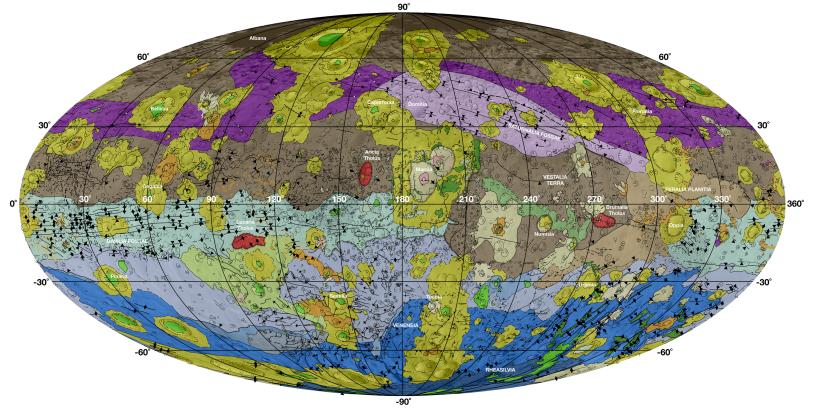
The asteroid Vesta is a critical source of important information regarding early solar system processes. With an average diameter of 510 kilometers, it is the second largest asteroid in the solar system, and it is thought to be the source for the most commonly found meteorite group, the HED meteorites*. Furthermore, scientists have strong evidence from the HED meteorites and spacecraft data that Vesta is differentiated; i.e., like the Earth, it has a metallic core, dense mantle, and less dense outer crust. Radiometric dating implies that Vesta, and the processes that formed it, are very old. It probably formed within several millions of years of solar system formation (as opposed to several billion years!). Many scientists have been motivated to study the geology of Vesta because it could provide more insight into how planetary bodies, including Earth, cooled, solidified, and formed in an infant solar system.
A recent study published in Geochemistry journal used a combination of HED meteorite data and Dawn mission data to answer questions about the formation of Vesta’s crust. Different rock types form via different processes, so the proportion of one to the other can tell scientists something about which processes dominated Vesta during the formation of its crust. Scientists from multiple institutes did this by surveying the 2,000+ HED meteorite entries in the Meteoritical Bulletin Database and by looking at gravity map and spectral data acquired by the Dawn orbiter. They concluded that the proportions of howardite, eucrite, and diogenite rock types, coupled with the distribution of them on the asteroid’s surface, are consistent with at least two major processes: 1) Vesta was originally completely molten, and cooled until it was approximately 60-70% solid; and 2) the leftover melt was removed from Vesta’s interior and either formed magma chambers in the new Vestan crust and then crystallized completely, or the leftover melt erupted on the surface, forming lava flows. This is more complicated than previous models, which suggested that Vesta cooled in a single event without any substantial melt extraction. READ MORE
*‘HED is an acronym that stands for howardite, eucrite, and diogenite, which are different rock types originating from Vesta.